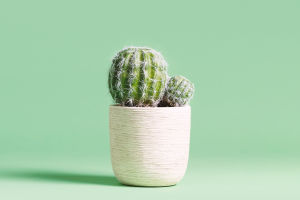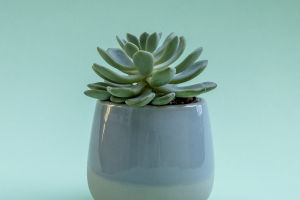Bringing home new potted plants is exciting, but proper care is essential for keeping them healthy and vibrant.
From balanced watering and appropriate sun exposure to essential maintenance, each step helps your plants thrive.
Here's a guide to watering, sunbathing, and maintaining your new plants.
1. Watering Your Plants
Watering is crucial, but overwatering and underwatering can harm plants. Follow these tips for balanced watering:
- Understand Plant Needs: Different plants have different water requirements. Succulents and cacti need minimal water, while tropical plants like ferns require more moisture. Research each plant's needs to avoid over- or under-watering.
- Soil Check: Insert your finger about an inch into the soil. If it's dry, water the plant; if moist, wait a few days.
- Watering Technique: Water slowly until it drains from the bottom, ensuring soil and roots are thoroughly hydrated.
- Consistent Schedule: Set a watering schedule but adjust based on the season; plants often need more water in warmer months.
2. Sunlight for Healthy Growth
Sunlight is essential for plants, but each plant has unique light needs. Here's how to provide the right amount of sun:
- Determine Sunlight Requirements: Plants generally need full sun, partial sun, or low light. Full-sun plants like succulents need six hours of direct light, while low-light plants like pothos thrive in indirect light.
- Position Correctly: Place full-sun plants near south-facing windows, partial-sun plants by east or west-facing windows, and low-light plants a few feet from windows.
- Rotate Plants: Rotate plants every few weeks to ensure even growth and light exposure on all sides.
- Supplemental Light: During darker seasons or in dim rooms, consider LED grow lights to support your plants' growth.
3. Maintenance Tips
Routine maintenance keeps plants healthy and attractive.
- Pruning and Trimming: Remove dead or yellowing leaves to encourage new growth and prevent pests. Trim leggy stems to keep a balanced shape.
- Dusting Leaves: Dust on leaves blocks light absorption. Wipe broad leaves with a damp cloth every few weeks to keep them clean and healthy.
- Fertilizing: Feed plants every 4-6 weeks during the growing season (spring and summer). Use a diluted, balanced liquid fertilizer suitable for your plant type. Avoid over-fertilizing to prevent nutrient burn.
- Pest Inspection: Check for pests like aphids, spider mites, or mealybugs, especially on the undersides of leaves. Treat any infestations with insecticidal soap or natural remedies like neem oil.
- Re-potting Cues: Most plants don't need repotting in the first year, but signs like roots growing out of drainage holes or soil drying quickly indicate they've outgrown their pots.
Caring for new potted plants means understanding their specific water, sunlight, and maintenance needs.
By watering according to each plant's requirements, positioning them for optimal light, and following regular maintenance routines, you can help your plants adjust and thrive in their new environment.
With attentive care, your plants will flourish, bringing life and beauty to your space.


